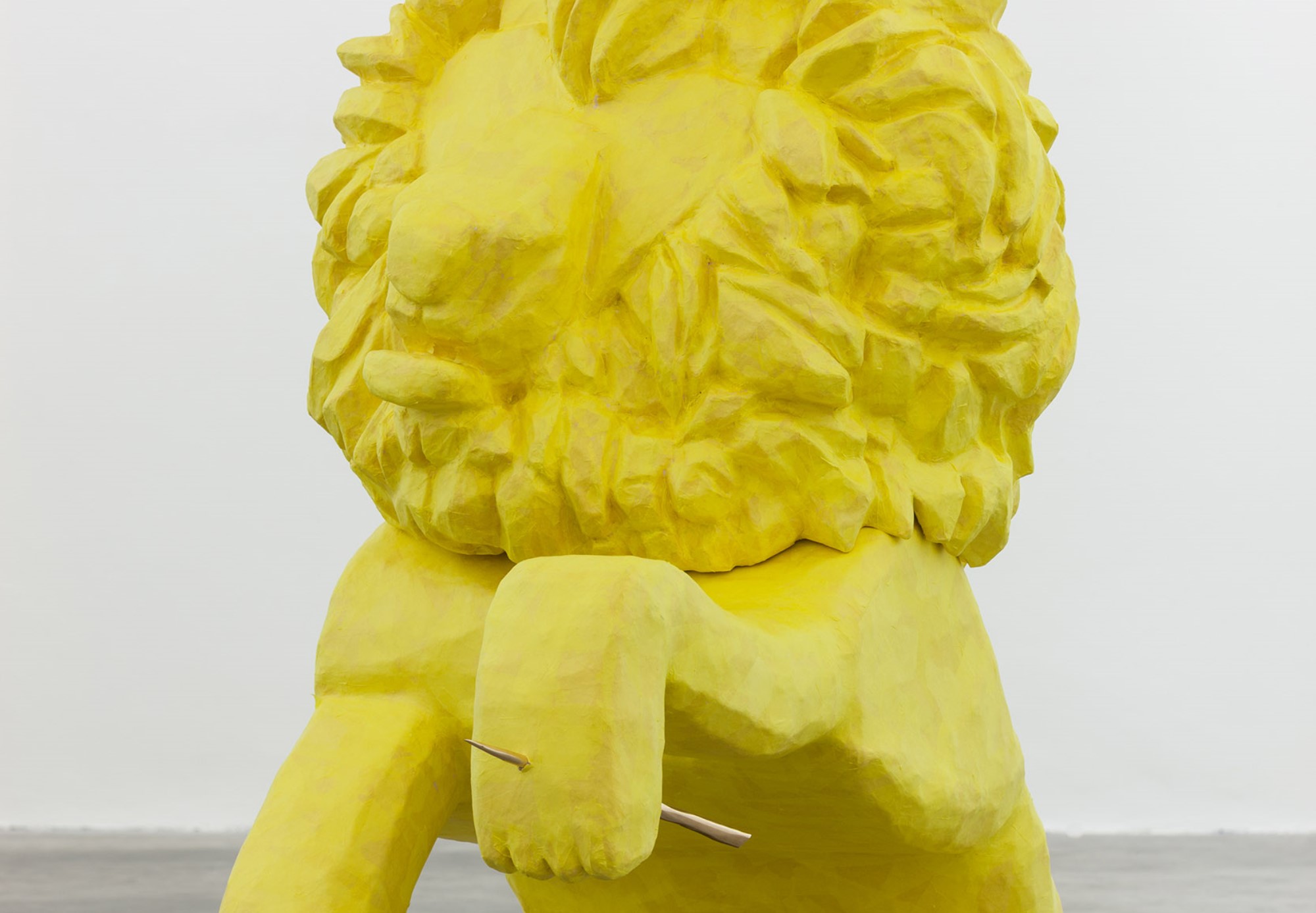[Written by Anastasija Svarevska]
[Image credit: Isabel Nolan, A lion with a thorn in his paw, 2015. Courtesy Kerlin Gallery.]
As you move from one room to another at “Extreme Imagination – Inside the Mind’s Eye”, a quote on a glass wall reads: “To me, this world is all one continued vision of fancy or imagination.” But what is imagination? There are many answers to that question. A key factor is our ability to conjure images inside our head or “mind’s eye”. It was recently discovered that the ability to visualize is not universal; it lies on a long continuum, within the range of a completely blind mind’s eye, with no mental imagery whatsoever, and its opposite, evocative and clear mental imagery. The exhibition explores these two extremes coined as “aphantasia” and “hyperphantasia,” by Professor of Cognitive and Behavioural Neurology Adam Zeman, and shows the phenomenon from artistic perspectives.
On entering the exhibition, the opening wall text has the power to captivate immediately. Having never heard of aphantasia or hyperphantasia before, it is intriguing to find out that around 3% of the population is affected by it. A selection of works made by this 3% is presented at the exhibition, not just artists but writers, designers, filmmakers, and architects.
Apart from an eye-catching yellow papier-mache of a lion in the center of the room, the first work that a visitor is exposed to is a drawing by Elina Cerla called “Aphantasia.” It is a great introduction to the exhibition since it authentically represents the influence of the condition on the artistic process. According to the commentary next to it, Cerla, an aphantasiac, describes her works as coming from a “spark of ideas rather than visually imagined pictures.” The drawing shows thoughts written down on a charcoal board and four female figures as if in the process of forming these thoughts. It captures the birth of ideas as well as the “haptic sensation of three-dimensional space,” as experienced by aphantasiacs.
Opposite the drawing there is a captivating video installation by Dominic Mason called “Untitled.” Looking at paint dissolving in water is hypnotizing, while listening to the artist describing his experience of aphantasia, including “trying to picture a face of a loved one who died” and being involved in “a pure act of creation” is truly absorbing. However, it is the artist claiming that “we can never truly see the world as somebody else does” that is most thought-provoking.
Part of the exhibition is a ‘Vividness of Visual Imagery Questionnaire (VVIQ)’, made by Adam Zeman to evaluate one’s mental imagery. The exhibition, which is a project based on “The Eye’s Mind” study, came into existence thanks to Zeman’s interest in the phenomenon and a collaboration between philosopher Fiona Macpherson (Glasgow), the neuroscientist Crawford Winlove (Exeter), and the art historian John Onians (East Anglia). Taking part in the questionnaire enables visitors to contribute in part to the research.
A particularly soft and tender collage of gouache painted paper by Clare Dudeney, a British contemporary artist based in London, can be found in the same room. Dudeney claims her power of visualization to be exceptionally strong; she often works from her memory, describing her works as being inspired by vivid dreams. Throughout the exhibition there are quotes by Joshua Reynolds, William Blake, and Alfred Hitchcock, all reflecting on visualization and imagination, contributing to a continuous meditation on the ideas of the exhibition.
The second room presents both aphantastic and hyperphantastic works. A print by architect Trevor Keetley that is simple yet full of complexity offers a contrast to a print of a bear by Megan Eckman, whose mental imagery is so powerful that she sees things which are not there. A dazzling, colour-rich acrylic on canvas by Elvenia Ruusu, allows you to put yourself in the artists’ place and imagine seeing the world in new and unimaginable ways.
A spectacular collaboration between scientists and artists, the exhibition leaves you with new insights about creativity and the possibility of experiencing life differently. These insights evolve into a profound idea that can be accurately demonstrated through the question asked by one of the visitors on the exhibition’s comment board: “Seeing is believing…or is it?”
[Image Description: A photograph of a yellow statue of a lion holding up its paw, with a long sharp object going straight through it.]

